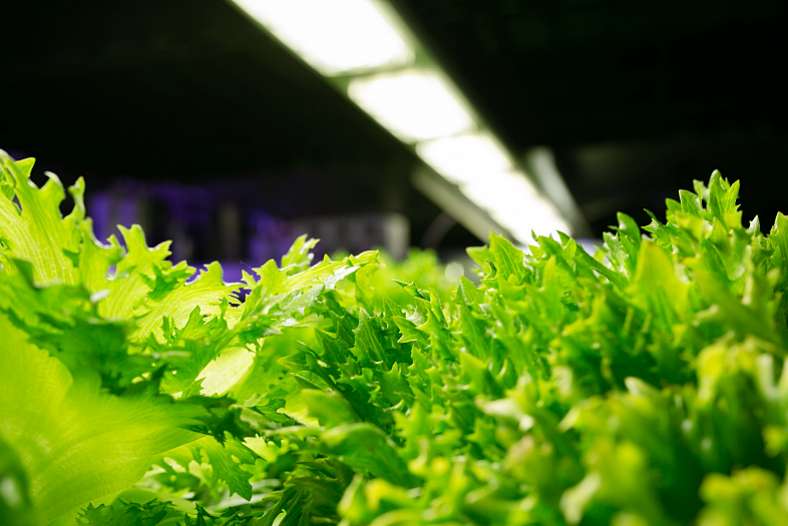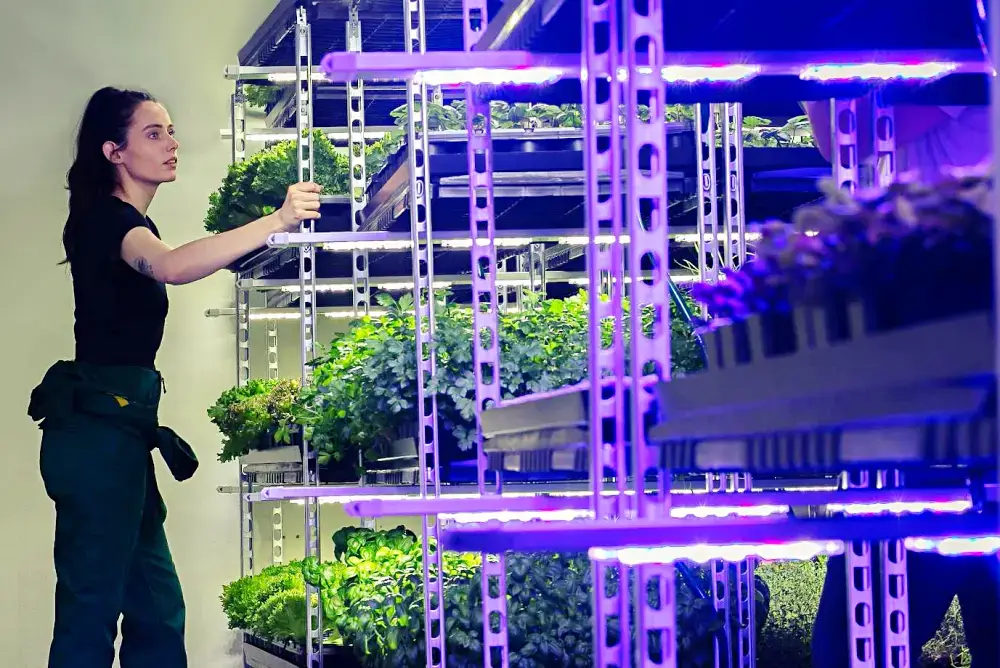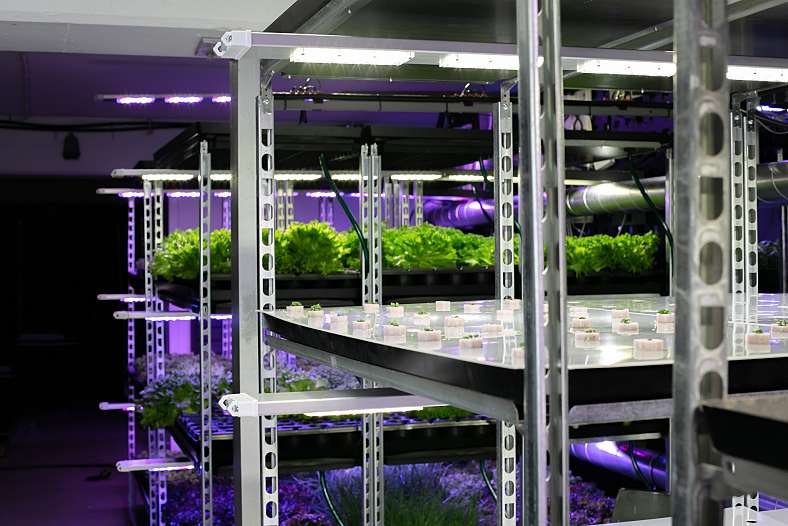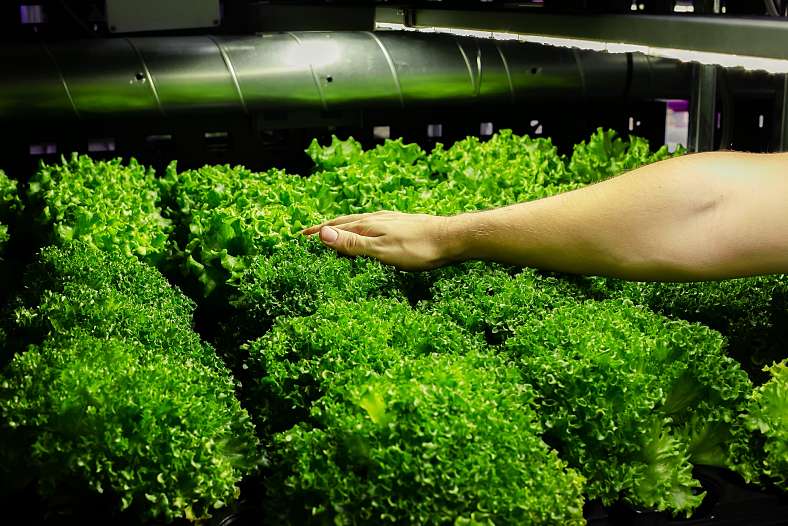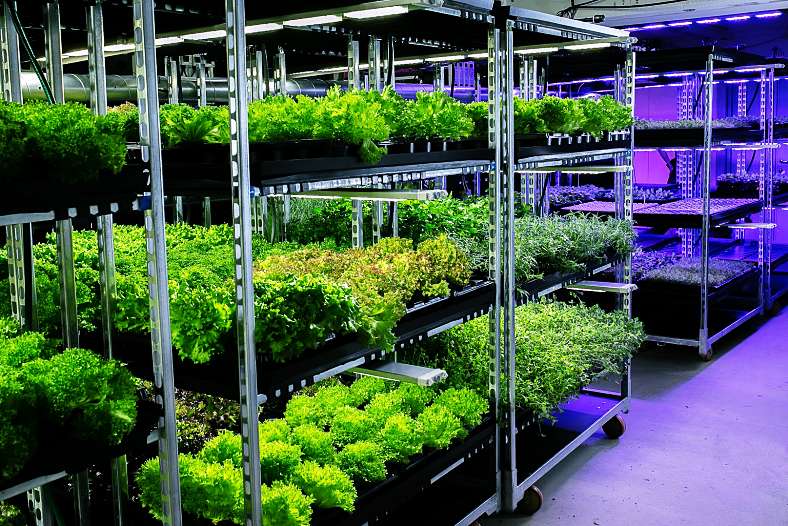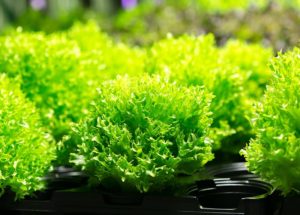Vertical farming costs are a lasting obstacle in the v-farming industry. Startup costs hold plant factory investors back, even though vertical farming can be vastly profitable. The key to success is meticulous planning, starting with vertical farming cost projections. Here are the key issues to consider!
Related article: How to reduce vertical farming startup costs?
Yes, vertical farming startups are relatively expensive. Compared to greenhouse startups, it might be six to ten times more costly, especially if setting up for fully automated production.
That said, long-term vertical farming costs are much lower. The main reason is that v-farming offers superior climate control. This control enables plant growth efficiency and profitability that traditional farming cannot compete with.
Related article: Vertical farming vs. traditional farming
Vertical farming can produce certain plants and crops more frequently and keep growth stable year-round. Simultaneously, plant production is brought closer to the consumers, effectively reducing transport emissions.
In other words, vertical farming can be very lucrative for those who have the means to invest and plan for long-term production. More importantly, now is the time to act since the market is still young and far from saturated.
Vertical farming research is a hot topic worldwide. Along with progress comes market expansion and industry growth. Soon, food production will be safer and more stable than ever, but the competition will also be tougher.
Vertical farming done right can solve our future food crisis. V-farming does not exploit arable land. Instead, it enables us to restore destroyed farmlands and increases our sustainable food production for future generations.
This has led industry magnates like Bill Gates and Jeff Bezos (founder of Amazon) to invest millions in vertical farming. Several global equity funds have also invested in the market, which is expected to be valued at $15.7 billion by 2025.
Contents:
- Vertical farming startup costs for plant factories
- Vertical farming methods
- The choice of farming method is crucial
- How energy consumption affects vertical farming costs
- Manual labor vs. automation
- Vertical farming costs examples
- Why choose vertical farming if it has high costs?
- Is vertical farming more profitable?
- The future of vertical farming
Vertical farming startup costs for plant factories
Plant factory startups inevitably need to consider vertical farming costs. There is no denying that plant factory startups are expensive, but the return on investment can be sped up by sound planning and meticulous execution.
However, there are many variables to consider when planning a plant factory startup. A complete expense overview is crucial for budget planning. Therefore, you must list essential equipment purchases for establishing your plant factory.

Key investment variables for plant factories
- Farm building or facility re-appropriation
- Vertical farming systems purchases
- Climate control systems purchases
- Cultivation method selection
- Insulation costs
- Energy consumption
- Manual work vs. automation
Plant factory startup costs naturally vary depending on your farm size and farming method. The bigger the plant factory, the more cultivation stations and LED lamps must be purchased.
Therefore, the size also directly impacts power consumption. Dehumidification, air conditioning, and lighting require much electricity, but a well-planned production can limit consumption.
Related article: How to reduce vertical farming energy consumption?
Starting small can reduce vertical farming startup costs. Once production is running smoothly, you can scale up. Meanwhile, it’s an excellent opportunity to market your delivery capability and establish a good network in your local market.
Experienced plant producers can easily overcome vertical farming costs by taking advantage of existing networks and quickly scaling the business. Moreover, recent technological advances make plant factory startups much safer since they decrease investment and operating costs.
By our calculations, vertical farming costs will soon decrease to the point that v-farming investment will be as affordable as greenhouse farming. We calculated this estimate by comparing how much we’ve invested per square meter of cultivation area to current price reduction trends.
Vertical farming systems purchases
Plant factory startups need to acquire much equipment, which naturally affects the initial vertical farming costs. First and foremost, you’ll need cultivation stations, lamps, and, most often, solutions for ventilation, dehumidification, and automation.
Automation solutions include seed drills, harvesters, robots, and other equipment for streamlined production. Avisomo’s vertical farming solutions are designed for large-scale plant factory automation. Click here to see our product line.
Buying advanced automation equipment like this is relatively expensive. Still, it quickly reduces daily vertical farming costs, making production far cheaper than plant growth with an extensive manual labor workforce.
Suppose you already produce vegetables and acquire the Avisomo system to start vertical farming. Then, you get one significant market advantage: You can grow your plants directly in CC trolleys.
Why is this advantageous? Because the CC trolleys can accommodate all kinds of pots, new automation systems, and your old plant growth solutions side by side. The versatility of the trolleys makes them adaptable to all your needs.
We have developed a module-based vertical farming system for easy handling and quick business scaling. Here is a complete overview of the Avisomo vertical farming system.
Farm building or facility re-appropriation
Production facilities acquirement might potentially rack up vertical farming startup costs. That said, creative building use and clever location selection might reduce facility costs considerably, especially compared to greenhouse farming.
In theory, vertical farming can be performed in any building, and plant factories can be set up in any sizeable structure. This means you can probably use any facility already in your possession, depending on your planned production size.
You might have to make some improvements or changes, but it’s still much cheaper to use your own buildings than to build something new. The most important thing is that the building(s) is or will become well-insulated.
There is a direct correlation between production facilities’ insulation and how much energy you use for temperature control and dehumidification.
The energy consumption might look overwhelming on paper but remember that indoor farming allows for total climate control and optimal plant growth year-round. To achieve this, outdoor weather conditions mustn’t affect your indoor climate.
Naturally, the larger the building and the bigger the production, the more equipment is needed. To keep startup costs down, it might be wise to start small. Yet it is a good idea to acquire a large facility, to prepare for rapid expansion.
Avisomo is happy to help with the planning. We can calculate how big your air conditioning system needs to be and how much insulation your building requires. We can also advise how to best divide your facility into separate sections for the most effective plant production.
Insulation costs
Depending on the type of buildings at your disposal, you might need various insulation upgrades to control your indoor environment. It can be costly but unquestionably a sound investment in the long run.
To avoid enormous insulation costs, we advise that you find a well-insulated building from the start. If you must re-insulate, there are many new and cost-reducing methods today, such as blow-in insulation.
Climate control system purchases
Vertical farming climate control requires adaptable systems. Temperature, humidity, ventilation, irrigation, and lighting are the most important things to stay on top of. Ideally, it would help if you also regulated the automation of seeding, harvesting, packaging, and as much of the production as possible.
The more functions and processes you regulate and control, the better your crops will become. Naturally, this directly affects your profits, since control of all aspects, from planting to boxing, reduces your production time.
This connects to your insulation since climate control is about reducing energy consumption. Successful plant factories are just as cautious about cutting costs as fast production.
Cost-cutting directly connects to climate control. With meticulous climate control, a well-insulated facility won’t need much heating when it’s cold outside or extensive cooling in warmer seasons. It is all about finding the perfect balance between cost-cutting and production optimization, which only indoor plant factories can facilitate.
Vertical farming methods
When you start a vertical farm, you must plan how to provide water and nutrients for your plants. There are several vertical farming methods to choose between, but most plants tend to favor one over the others. Most common is hydroponics, but aeroponics, aquaponics, or plant growth in traditional soil are also common.
Hydroponic cultivation: Does not use soil. A farming method in which the roots always have direct access to water and nutrients. Hydroponic cultivation has little margin for error since access to high-quality water is critical.
On the other hand, plants that thrive in a hydroponic environment grow very fast compared to plant growth in soil or peat.
Aeroponic cultivation: Does not use soil. A farming method in which the plant roots hang in the open air. The roots are then sprayed with a nutrient mixture at regular intervals.
Aeroponics often comes with mechanical challenges and requires much maintenance to maintain operational reliability. That said, aeroponics is known for promoting the fastest growth.
This farming method gives the plants exactly what they need: Much oxygen, water, and the right amount of fertilizer.
Aquaponic cultivation: Like hydroponics but utilizes fish or other aquatic creatures to distribute plant nutrients. Aquaponics requires careful planning since the environment must be well-balanced for both plants and fish to be functional.
Only a few select combinations of fish and plants can work optimally together.
Soil: When using soil or peat, the substrate must be well-drained to maintain proper oxygen supply to the plants. The substrate already contains some nutrients. You must therefore be careful when choosing a fertilizer.
Soil and peat also invite plant diseases, insects, bacteria, fungal spores, or other organisms into an otherwise controlled environment. Therefore, filtration is essential. If you choose indoor plant growth in soil, plan for pest management.
The choice of farming method is crucial
Your choice of farming method determines what kind of plants you can produce. Or, more often, the plants you plan to produce dictate which method you ought to go for.
We at Avisomo can advise on which plants and farming methods to choose to maximize your chances for success. Our vertical farming system can facilitate all plant growth methods listed above.
The operating costs differ between the farming methods. Soil is always cheaper to buy than sterile substrates. However, the added cost of pesticides and the required work hours raises the vertical farming costs considerably.
The investment cost also differs between the methods. Aeroponics is more expensive in start-up and operation, but if done correctly, it can produce up to 10-15 % better plant growth.
Hydroponics has the most affordable installation and operation if the pest control is well-managed.

How energy consumption affects vertical farming costs
Power consumption is usually listed as operational vertical farming costs, but it also affects start-up costs. This is because the production facility needs to uphold correct temperatures and humidity before production commences.
You want to start your plant production with total climate control. This means that air conditioning and dehumidification should be installed and well-functioning before you start sowing.
It is also a good idea to test the system to ensure that everything works properly before sowing seeds. To ensure that no heat or moisture builds up anywhere in your vertical farm, test your facilities over an extended period.
Climate control and dehumidification are your primary startup energy thieves. Once production commences, lamps, irrigation systems, control systems, robots, and more will add to your energy consumption and increase your vertical farming costs.
The average power consumption in vertical farms:
- 65 % lamps
- 30 % climate control
- 5 % other (automation solutions, pumps, etc.)
Grow lights use the most power, by far. This is where lamp quality and light control comes into play. LED technology has come a long way. The latest lamps on the market are the best option for reducing vertical farming costs.
Related article: Why are LED grow lights best for vertical farming?
In short, power consumption directly connects to your grow lights’ efficiency and your light spectrum distribution. The new generation of LED grow lights waste less energy than ever, and their light spectrums are easily fine-tuned to perfection.
Remember to include the installation of new electrical circuits and systems to support your grow lights when calculating your vertical farming costs.
Manual labor vs. automation
We mentioned robots in the previous chapter. They become part of the equation when setting up vertical farming automation. Depending on your farm size, it might be beneficial to automate many processes to reduce labor costs.
Robots and machines can, for example, partly or fully automate the sowing, harvesting, moving of trolleys between different cultivation areas, and boxing of plants for shipping.
Avisomo always recommend our partners to consider automation, or implementation of such at a later stage in development. Machines and robots will always decrease vertical farming costs when your farm expands beyond a certain point.
Vertical farming costs examples
To better understand what vertical farming costs are in practice, we will now list examples of three different farm sizes and their financial needs. We also consider whether the vertical farms are worth automating or not.
That said, regardless of farm size, automatic irrigation, lighting, and climate control will always decrease vertical farming costs. This is why all Avisomo systems include these types of automation.
0-80 stations (0-880 m2 cultivation area), manual labor:
You need employees to carry out day-to-day tasks when operating a small facility. Investing in expensive automation machinery at this point might topple your vertical farming business since a return on investment will take a long time.
However, profits will increase when investing in certain semi-automatic solutions such as vacuum sowers, mowers, and other equipment for streamlining manual operations. When expanding, more extensive automation should follow.
80-400 stations (880-4400 m2 cultivation real), semi-automatic:
When operating a medium-sized farm, automating some processes might be very beneficial. For instance, it is useful to automate the moving of trolleys that are going to and from various cultivation zones.
Harvesting and sowing machinery might also significantly reduce vertical farming costs in medium-sized plant factories. Avisomo gladly helps to calculate what your farm will benefit from investing in automation solutions.
400-1100 + stations (4400-12 100 m2 cultivation area), fully automated:
In larger farms, automation solutions quickly pay off. In other words, larger plant factories should automate sowing, harvesting, logistics, packing, and as much of the production as possible.
As mentioned, automating plant growth optimization always pays off. Plant factories of this size minimize the workforce and maximize automation and robotics. The result is minimized vertical farming costs and maximized return on investment.
Why choose vertical farming if it has high costs?
Although vertical farming start-up costs are relatively high, the technology is here to stay. In the long run, and with proper planning, return on investments can be secured with high certainty.
A significant factor is complete climate control. As opposed to traditional farming, vertical farming crops are never affected by the weather and can be stabilized for repeated growth cycles year-round.
As a result of total climate control, the income streams also stabilize. This makes vertical farming extremely compatible in countries with harsh weather conditions, like the Middle East, where extreme heat is a frequent issue.
Vertical farming is also beneficial in northern areas, like Scandinavia, where temperature and light conditions vary much throughout the year. For instance, the strawberry season in Norway only lasts a few months.
In plant factories, the strawberry season never ends.
Another critical factor is the increasing market value of vertical farming. Your customers will soon experience that plant factories consistently produce high-quality plants. As customer satisfaction increases, so will market demand.
Increased market demand is beneficial for everyone involved in the food supply chain. In the long run, it will affect all aspects of food production, from large volume distributors and wholesalers to marketplaces and end users.
Success begins with a good balance between investments, operating costs, and earnings. It might be a new equation to figure out for many, but at least most vertical farming costs tend to be fixed and predictable year-round.
A final and excellent reason to opt for vertical farming is that it answers future food demands. Plant factories exploit little to no arable land, one of the most severe environmental breakdowns caused by traditional agriculture.
Vertical farming is the best option we have to feed our future generations without completely draining the planet’s resources. There might be some kinks to hammer out, but we’re getting there soon.
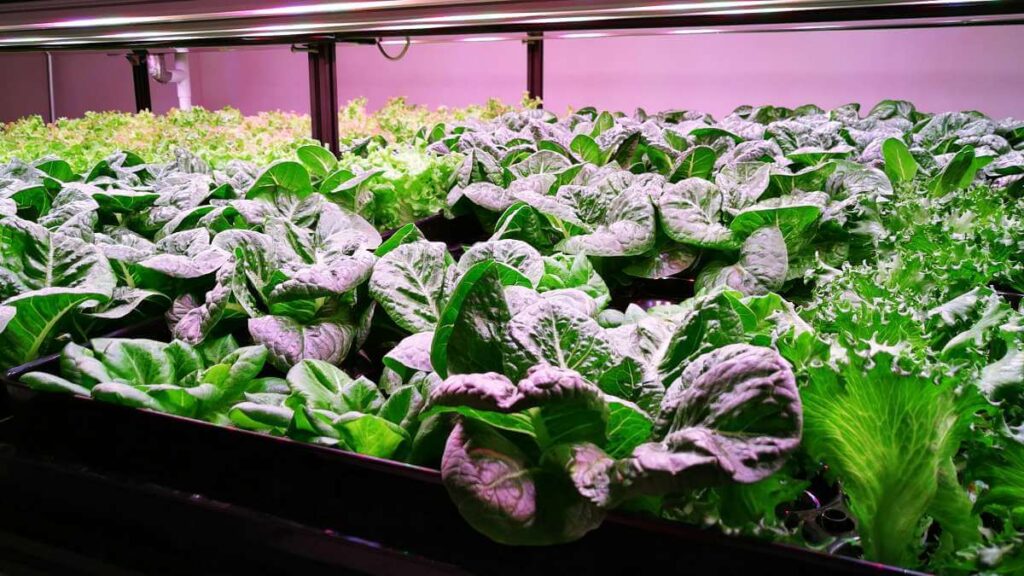
Is vertical farming more profitable?
The simple answer to this question is yes. If you do it right, vertical farming is more profitable than greenhouse or traditional farming (comparing the same crops).
Operating costs may be somewhat higher due to power consumption, but you also produce more. If you carry out production by the book, you can increase crop volume and reduce power consumption while utilizing a smaller land area.
Plant growth in vertical layers naturally enables farmers to produce more per square meter than other types of farming. However, for the time being, plant factories achieve the best results with leafy greens, herbs, and micro-greens.
You can also grow strawberries, cucumbers, tomatoes, mushrooms, and many other plants on vertical farms, but the production of such has yet to be streamlined. Some of the biggest plant factories worldwide promise to fix this by 2022, meaning that plant selection will increase shortly.
Balancing technology investment, plant selection, and vertical farming cost-cutting
The development of plant selection for vertical farming connects to the continued development of LED technology. Better LED plant lights make more plant types available for large-scale production. It also means power consumption cuts and a further decrease in vertical farming costs.
The vertical farming equation also hinges on cost-cutting in other areas, such as pesticides. Since plant growth occurs in a closed environment, plant factory crops are rarely exposed to pests.
Plant diseases can also be largely avoided if you keep your farming facilities clean and closed. As such, not only do you limit your vertical farming costs, but you produce highly marketable plants.
In short, vertical farming in plant factories is a science. If you do it right, you can outcompete all kinds of farmers. You will produce better and healthier food for the consumers and combat environmental breakdowns from food production.
Related article: How vertical farming reduces environmental impact
The future of vertical farming
Whatever goal you set to reach, your budget must be adjusted to your investment limit and the farming solutions at hand. Vertical farming has been around for 20-30 years but is far from fully developed.
That said, plant factory production has proven to be commercially sustainable. In America and Japan, for instance, plant factories have already become billion-dollar industries, and the rest of the world is following suit.
When starting a plant factory, vertical farming costs will vary greatly depending on many factors. Geographical location, what you want to grow, access to investment capital, and human resources are some of the most important factors to consider.
One thing is for sure; there is an ever-increasing worldwide need for expanded food production. Vertical farming offers an opportunity to grow high-quality plants that are both economically and environmentally sustainable.
Resources
AgFunderNews: The economics of local vertical & greenhouse farming are getting competitive
Journal of Agricultural Studies: Up, Up and Away! The Economics of Vertical Farming
MDPI: Indoor Vertical Farming in the Urban Nexus Context: Business Growth and Resource Savings
MDPI: Sustainability Matters: Consumer Acceptance of Different Vertical Farming Systems
University of Massachusetts Boston: Economics of Vertical Farming: Quantitative Decision Model and a Case Study for Different Markets in the USA
University of Massachusetts Boston: Vertical Farming Economics in 10 Minutes





